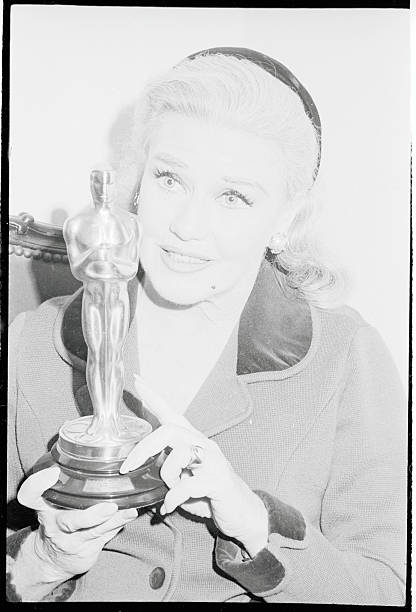 |
| Ginger on the night of the 1941 Oscars ceremony |
"This is the greatest moment of my life."
The Academy Award she recieved that night commemorated her performance as Best Actress of 1940 for her role in the film Kitty Foyle: The Natural History of a Woman. When offered the part of the titular character, she initially refused after reading the novel of the same name by Christopher Morley on the grounds that the content was too vulgar and against her own moral beliefs. "I was really embarrassed that RKO would send me something like this."
 |
| Ginger in Kitty Foyle |
However, once she was handed a new script rewritten for the screen, she fell in love with the idea of portraying a character so vastly different than her previous roles of song and dance. "As I read [the script], I felt all the emotion that I hadn't felt while I was reading the book."
Ginger accomplished what many stereotyped stars were unable to do at that time; she presented an emotional and genuine performance to her public showcasing her versatile and believable talents as an actress.
Seven years prior to the role that would land her an Oscar, Ginger Rogers and Fred Astaire appeared on screen together for the first time in Flying Down To Rio (1933), setting in motion a series of productions that would inevitably typecast Rogers as nothing more than a supporting role to Astaire. Realizing the path her career would soon take, she began desperately seeking roles that would prove her capacity as an artist outside of musicals. This led her to embark on a journey of self discovery within her craft, beginning with her role as Ellie May in the film Primrose Path (1940), her first dramatic portrayal following her chain of lighthearted pictures.
Rather than remain overshadowed by her various male counterparts, Ginger Rogers fearlessly took on the challenge of Kitty Foyle, strengthening her artistic ability by breaking the mold placed upon her by her studios and her audience. So it was on the night of February 27th, 1941 that she knew she could be recognized for more than just her singing and dancing, and that this victory would open new opportunities to advance her career as a serious actress.
"In Kitty Foyle, I had an opportunity to create a three-dimensional portrait of a young American woman, and when the picture was finished, I felt I'd met the challenge."
 |
| Ginger holding her Oscar in 1966 |
© Saga of Ginger and sagaofginger.blogspot.com 2018 Unauthorized use and/or duplication of this material without express and written permission from this site's author and/or owner is strictly prohibited. Excerpts and links may be used, provided that full and clear credit is given to Saga of Ginger and sagaofginger.blogspot.com with appropriate and specific direction to the original content.

This work is licensed under a Creative Commons Attribution-NonCommercial-NoDerivatives 4.0 International License.

This work is licensed under a Creative Commons Attribution-NonCommercial-NoDerivatives 4.0 International License.






.jpeg)




Post a Comment